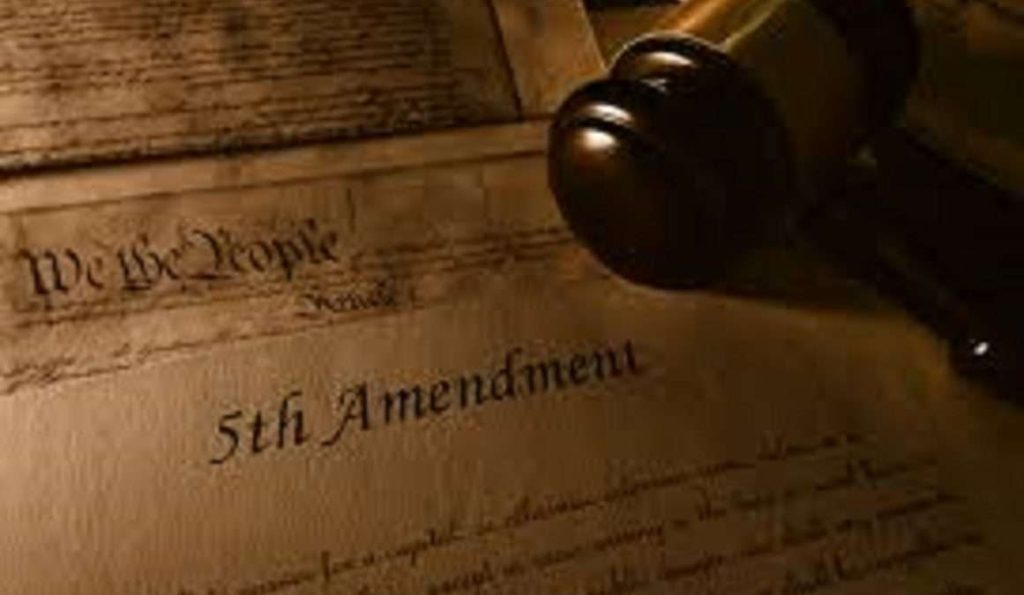(NA)
Today, the Supreme Court refused to review the case of Brinkmann v. Town of Southold, which raised an unusual and extremely difficult issue about the meaning of “public use” in the Takings Clause of the Fifth Amendment. Three justices (Thomas, Gorsuch, and Kavanaugh) wanted to take the case, but four votes are necessary to grant a petition for writ of certiorari. I summarized the key issue in the case in a previous post about it (in part by quoting takings litigator Robert Thomas):
The Takings Clause of the Fifth Amendment says the government may only “take” private property for a “public use.” In cases like Berman v. Parker and Kelo v. City of New London, the Supreme Court has ruled (wrongly, in my view) that almost any potential benefit to the public qualifies as a “public use.” Thus, in Kelo the Court upheld the condemnation of homes for purposes of promoting privately owned “economic development…”
But the Kelo majority also indicated that a taking can still be invalidated if the government tries to “take property under the mere pretext of a public purpose, when its actual purpose was to bestow a private benefit….”
How do courts determine whether a taking is pretextual? Since Kelo, lower-court decisions on that issue have been all over the map. In Chapter 7 of my book The Grasping Hand: Kelo v. City of New London and the Limits of Eminent Domain, I identified at least five different approaches to this issue adopted by state and lower federal courts since Kelo….
Most pretextual takings cases deal with situations where the government condemns property for transfer to a private party. But in Brinkmann v. Town of Southold, the US Court of Appeals for the Second Circuit addressed a case where a condemnation for transfer to public ownership might still be pretextual, because the official rationale was a pretty obvious smokescreen for a different motive….
[what follows is excerpted from Robert Thomas’s summary of the case and lower court rulings:]
The Brinkmanns wanted to build a big box hardware store on a 1.7 acre vacant parcel. The usual objections from area residents and the Town itself appeared… Even a failed attempt by the Town to buy the property itself before the Brinkmanns closed their purchase.
When all those didn’t succeed in stopping the development, the Town began proceedings to forcibly acquire the land by eminent domain. What for, you ask? A public park. More precisely, a “passive use park.” What’s that, you ask? It isn’t what you might think make a typical public park. Things like public facilities, art installations, walking trails, recreational and entertainment spots…. No, this was to have none of those things, it was to be “a park with no significant facilities or improvements,” also known as a big open, empty field….
Next step was a federal court section 1983 action by the Brinkmanns, “alleging a pretextual taking in violation of the Takings Clause of the Fifth Amendment….” The Town may have claimed that the taking was for a “classic” public use…., but the Town’s actual reason, the Brinkmanns alleged, was what we call a “spite taking”—the Town didn’t like the use we’re making or going to make of our property, so decided to take it from us. This was the real motivation to take our property, and that’s not a public use, according to the complaint. The district court wasn’t having any of it, and dismissed for failure to state a claim.
A divided panel of the Second Circuit affirmed…..
As the opinion put it, “Plaintiffs have not pointed to any Town purpose that violates the Takings Clause…”
In short (and this is our characterization, not the court’s), the Fifth Amendment contains a Public Use Clause, not a “Good Motivation Clause…”
I would very much like the Supreme Court to take another public use case, and overrule Kelo and Berman, or at least cut back on those badly flawed precedents. But, for reasons noted in my earlier post, I think this case would have been a bad vehicle for reviewing these issues:
Having written a book and numerous articles on public use issues, I rarely run across a public use case where I’m unsure what the right outcome should be. But this is one of those rare times.
Pretextual takings doctrine is a mess generally. But I think it can legitimately be used to strike down a variety of takings for transfer to private parties; indeed, I believe most such takings are unconstitutional even aside from the pretextual motives, because I support the “narrow” view of “public use” under which the government may only take property for publicly owned facilities or private ones that have a legal duty to serve the entire public.
In most situations, the narrow view is satisfied when the government takes property for public ownership…. But this case is different from most takings for public ownership because the government isn’t actually using the condemned property for anything. As Judge Menashi puts it [in his dissenting opinion], the supposed “public park” is actually “fake.”
This opens up the possibility there can be public ownership without public use. To be sure, there can sometimes be “use” even if the government doesn’t build anything on the land it takes…. But there is no such use here, not even a “passive” one. The only goal is to block the Brinkmanns’ plan to build a hardware store, not to use the land for any affirmative purpose.
Perhaps such blocking can still be a “use.” But the issue is a difficult and murky one…..
Pretextual takings jurisprudence has long been a mess, and at least four Supreme Court justices have expressed interest in clearing it up, and perhaps overruling or limiting Kelo in the process.
I very much hope the Supreme Court does clean up the mess and—better still—overrules Kelo. But this case is not a good vehicle for that.
Unlike Kelo, it does not address the issue of condemnations for transfer to private parties.vIt instead deals with the unusual situation where the government retains the condemned property but has no desire to do anything with it other than block a private use it objects to. The issue is an extremely difficult one. And even if the Court resolves this hard question correctly, doing so would not do much to improve public use doctrine more generally.
Legal issues aside, I think the Brinkmanns were victims of an egregious abuse of government power here. Even if it doesn’t violate the Public Use Clause to do so, local governments shouldn’t use the “despotic power” of eminent domain merely to eliminate uses of property neighbors dislike. It’s even worse if they end up turning a potentially valuable land use into an empty lot of no value to anyone. Calling it a “passive park” doesn’t make that right. But not every injustice makes a good Supreme Court case. Sadly, this is one of the many that doesn’t.
NOTE: The Brinkmanns represented by the Institute for Justice, with which I have worked on other property rights issues over the years. I have no involvement in this case.
The post Supreme Court Refuses to Hear “Passive” Park Public Use Property Rights Case appeared first on Reason.com.







